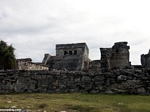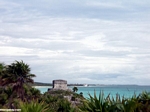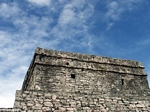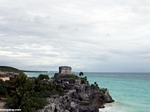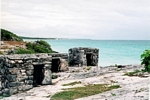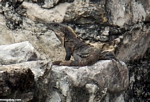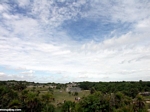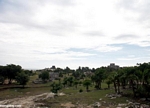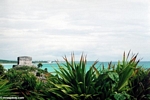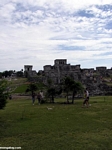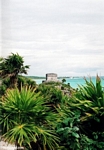
|
MEXICO: caribbean | reefs | cenotes biotopes | cenotes caves | lagoon | tulum | cancun region |
|
Photos of Tulum ruins in Mexico
Below are links to pictures from the Mexican Yucatan. caribbean | reefs | cenotes biotopes | cenotes caves | lagoon | tulum | cancun region Except where noted, all images are the property of Rhett A. Butler, copyright 1994-2004. Contact me with questions regarding use, reproduction, or purchase of any of the pictures. Recommended travel guides on Mexico: Tulum [Wikipedia]: Tulum Ruins The Maya site may have been formerly also known by the name Zama, or the City of Dawn. While an inscription dated 564 has been found at the site, most of the structures now visible were built in the Post-Classic Era, between about 1200 and 1450. The city remained occupied through the early years of the Spanish conquest of Yucat�n, but was abandoned in by the end of the 16th century. Local Maya continued to visit the temples to burn incense and pray until the late 20th century, when tourists visiting the site became too numerous. A number of the buildings sport fresco murals on the interior (small remaining traces of paint suggest that the exterior of some buildings may have been similarly decorated). The murals show Mixtec influence. The first detailed description of the ruins was published by John Lloyd Stephens and Frederick Catherwood in 1843. Tourism Some visitors are surprised by the small size of the site, but its proximity to the sea (the only Mayan ruins in Mexico by the sea) makes it a popular destination for tourists. Today, large tour buses arrive in a constant stream of visitors. The Tulum ruins are the third most visited archaeological site in Mexico, after Teotihuacan and Chichen Itza. It is popular for the picturesque view of the Caribbean and a location just 120 km south of the popular beach resort of Cancun. The tourist destination is now divided into three main areas: the archaeological site, the pueblo or town, and the "hotel zone," or strip of beach lined with small cabanas. Tulum Pueblo Several years ago, Tulum Pueblo was a quiet village 2 km. from the archaeological site, and tourism outside of the ruins was limited to a few small shops and simple cabanas on the beach. As of 2005 population of Tulum Pueblo has grown to over 10,000 permanent inhabitants. The "hotel zone" of boutique hotels on the Tulum beach has grown to over 40 small hotels, most of them cabanas built in the traditional Mayan style with thatched palm roofs. The hotel zone is mostly filled with tourists whereas Tulum Pueblo is mostly a Mexican town, with some tourists eating in the restaurants and bars at night. SHARE: |
what's new | rainforests | tropical fish | for kids | search | about | copyright & use | contact |
Copyright Rhett Butler 1994-2012 Pictures were taken by Rhett A. Butler, copyright 1996-2009. While these photos are the property of mongabay.com, it may be permissible to use them for non-commercial purposes (like powerpoint presentations and school projects), provided that the images are not altered in any form. Please read this for more details. If you are interested in using an image in a publication please contact me. Mongabay.com is a free resource. |

